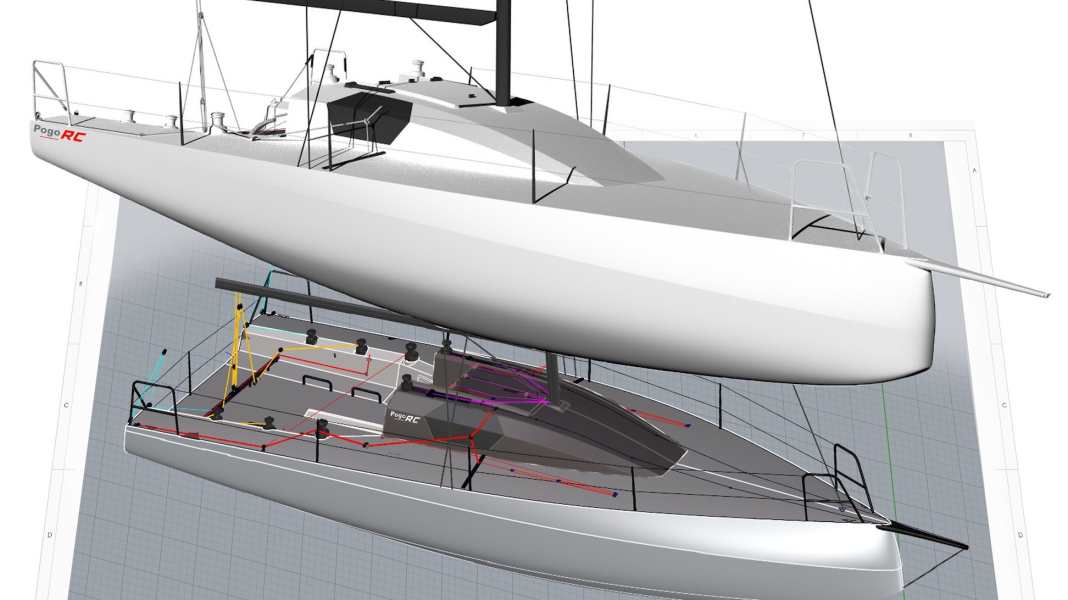
The plans for the new Pogo boat are the result of a collaboration between Bernard Nivelt and Sam Manuard, two heavyweights in the design of modern ocean racing yachts. The two surveying artists have customised the concept of the new Pogo RC very specifically and focussed on an optimal IRC handicap. Added to this is Pogo Structures' more than 30 years of experience in the construction and design of fast, planing performance boats. The shipyard on the French Atlantic coast stands like no other manufacturer for the serial production of regatta yachts from 6.50 metre mini class offshore dwarfs to large fast cruisers with a hull length of over 15 metres.
The deck layout of the new Pogo RC is specially designed for long distances in single or double-handed mode, but is also intended to provide a sporty platform for an ambitious four- to five-person regatta team on short courses. However, the focus is more on long distances. In particular, Pogo has built the new RC model for the "Transquadra", which is extremely popular in France and increasingly internationally. The transatlantic regatta takes single-handed and double-handed sailors across the pond every four years, although only pure amateurs with comparatively simply equipped production boats are eligible to compete. However, the Pogo RC will also be used for other ocean classics such as the Rolex Fastnet Race or the Transat Cap-Martinique.
Sporty concept, simple design
Apart from rather cautious project information with the most important technical data, the shipyard Pogo Structures is holding back with detailed information on the new boat. For example, no information is currently available on prices, standard specifications, measurements or construction specifications. It is known from the regulations for the "Transquadra" that the boats and rigs approved for the regatta may not be made of carbon fibre and that the hull appendages (keel and rudder) must be permanently installed. This can therefore also be assumed for the new Pogo RC.
There are also currently no visualisations other than the rendering of the deck equipment shown above. The simple aluminium rig will be equipped with double aft stays (runners) for trimming. A high, slim mainsail with a squarehead and a short overlapping genoa at the front, which is adjusted using flying 3D hoist points, will also be fitted. The additional space-wind sails (gennaker or code zero) will be set on the apparently quite long bowsprit.
In keeping with its orientation as a pure regatta boat, the layout below deck will be as simple as possible, but all the more functional to meet the simple needs of long-distance regatta sailors.
Technical data Pogo RC
- Designer: Bernard Nivelt/Sam Manuard
- CE design category: A
- Torso length:10,26 m
- Width: 3,50 m
- Weight: 3,3 t
- Sail area on the wind (main + genoa): approx. 70.0 m²
- Sail area downwind with gennaker: approx. 160.0 m²
